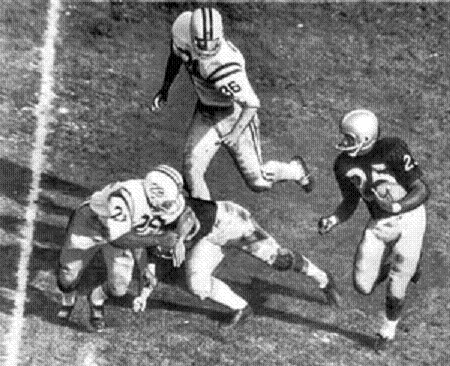


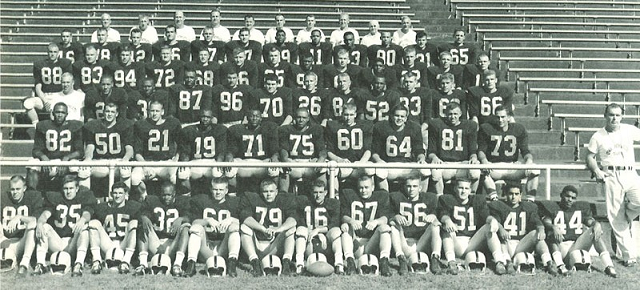
| Oregon State (6-3-1) | 22-12 | |
| at Northwestern (5-4) | 42-0 | #21 |
| at Michigan State (6-2-1) | 27-15 | #8 |
| Wisconsin (4-5) | 28-21 | |
| Purdue (4-4-1) | 21-14 | #11 |
| Kansas (7-2-1) | 21-7 | #9 |
| at Minnesota (8-2) | 10-27 | #3 |
| Ohio State (7-2) | 35-12 | #7 |
| at Notre Dame (2-8) | 28-0 |
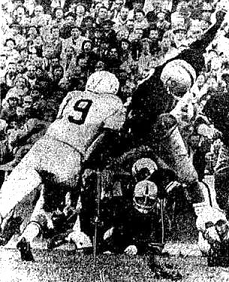
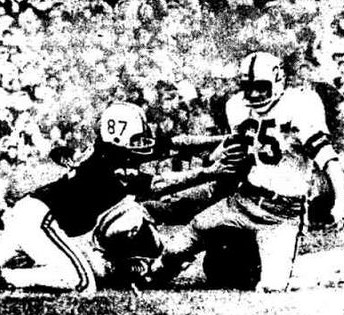
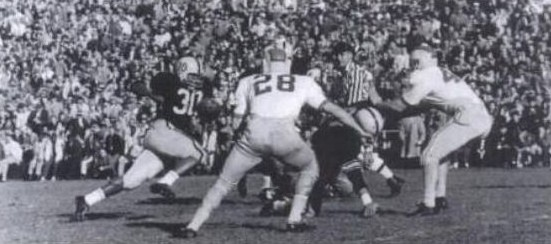
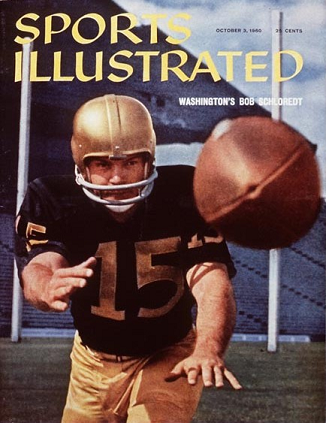
| Pacific (4-6) | 55-6 | |
| Idaho (1-9) | 41-12 | |
| Navy (9-2) | 14-15 | #6 |
| at Stanford (0-10) | 29-10 | |
| UCLA (7-2-1) | 10-8 | #10 |
| (Portland) Oregon State (6-3-1) | 30-29 | |
| Oregon (7-3-1) | 7-6 | |
| at Southern Cal (4-6) | 34-0 | |
| California (2-7-1) | 27-7 | |
| at Washington State (4-5-1) | 8-7 | |
| Rose Bowl Minnesota (8-2) | 17-7 | #3 |
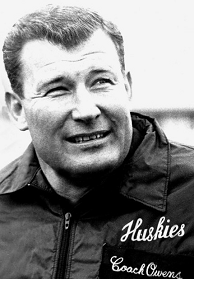 This season is Washington's first MNC, but the football program
here had had some success in the past. They went unbeaten for 9
straight seasons 1908-1916 under Hall of Fame coach Gil Dobie. Then
they went 58-12-4 under Enoch Bagshaw 1922-1928, with 2 Rose Bowl
appearances. After that, Washington football was just okay over the next couple of decades, making the
top 25 about once every 4 seasons. But in the 1950s, the program
degraded from just okay to just bad, going 31-45-4 from 1951 through
1958. Then suddenly, Washington exploded for a pair of 10-1 seasons
1959-1960, each capped with a Rose Bowl victory.
This season is Washington's first MNC, but the football program
here had had some success in the past. They went unbeaten for 9
straight seasons 1908-1916 under Hall of Fame coach Gil Dobie. Then
they went 58-12-4 under Enoch Bagshaw 1922-1928, with 2 Rose Bowl
appearances. After that, Washington football was just okay over the next couple of decades, making the
top 25 about once every 4 seasons. But in the 1950s, the program
degraded from just okay to just bad, going 31-45-4 from 1951 through
1958. Then suddenly, Washington exploded for a pair of 10-1 seasons
1959-1960, each capped with a Rose Bowl victory.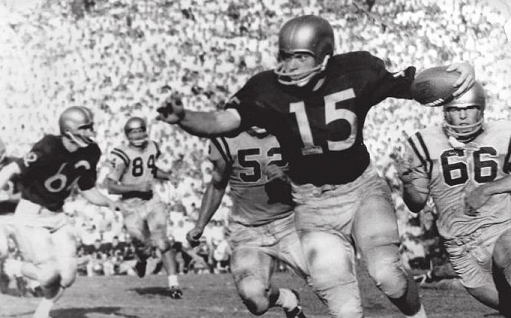
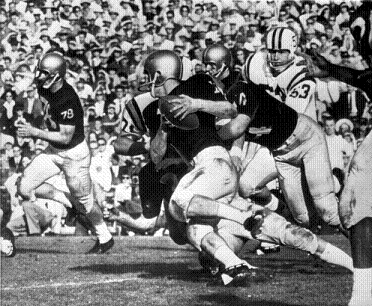

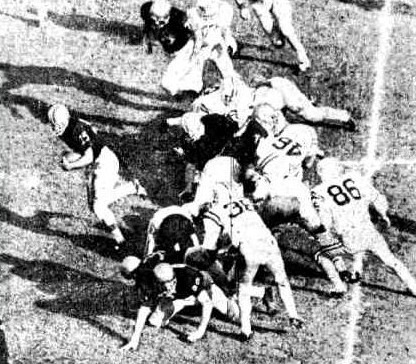
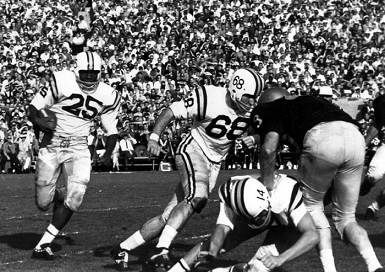
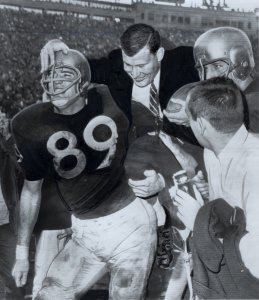
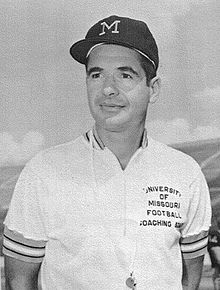
| Southern Methodist (0-9-1) | 20-0 | |
| Oklahoma State (3-7) | 28-7 | |
| at Penn State (7-3) | 21-8 | #23 |
| at Air Force (4-6) | 34-8 | |
| at Kansas State (1-9) | 45-0 | |
| Iowa State (7-3) | 34-8 | |
| at Nebraska (4-6) | 28-0 | |
| Colorado (6-4) | 16-6 | |
| at Oklahoma (3-6-1) | 41-19 | |
| Kansas (7-2-1) | 7-23 | #9 |
| Orange Bowl Navy (9-2) | 21-14 | #6 |
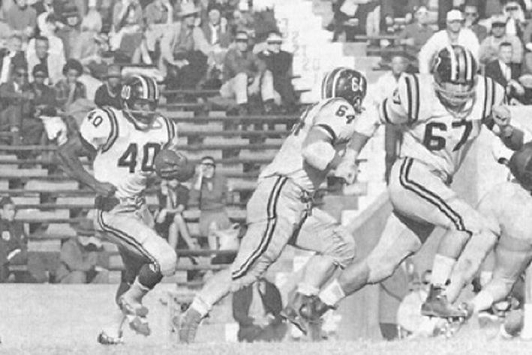
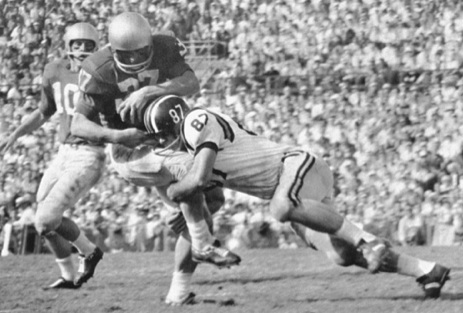
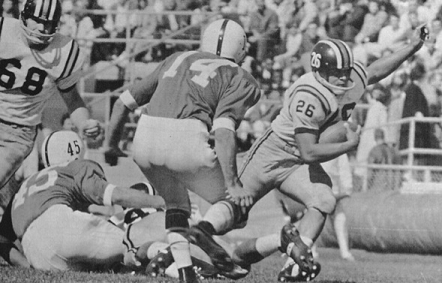
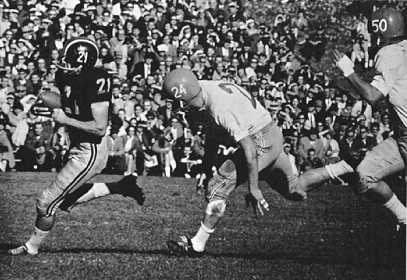
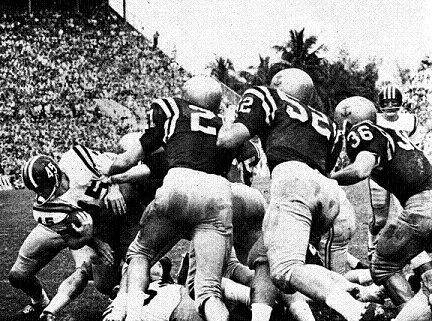
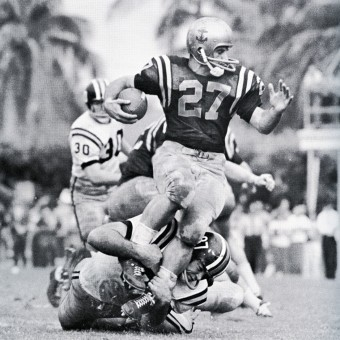
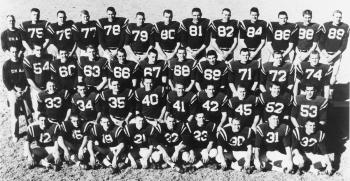
| at Houston (6-4) | 42-0 | |
| (Memphis) Kentucky (5-4-1) | 21-6 | |
| at Memphis (8-2) | 31-20 | |
| at Vanderbilt (3-7) | 26-0 | |
| at Tulane (3-6-1) | 26-13 | |
| at Arkansas (8-3) | 10-7 | #14 |
| Louisiana State (5-4-1) | 6-6 | |
| Tennessee-Chattanooga (5-5) | 45-0 | |
| at Tennessee (6-2-2) | 24-3 | |
| Mississippi State (2-6-1) | 35-9 | |
| Sugar Bowl Rice (7-4) | 14-6 | #25 |
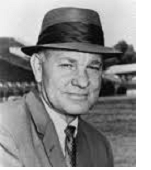 Prior to
the arrival of Hall of Fame coach John Vaught (pictured at left) in 1947, Mississippi's
football history had been even thinner than Missouri's. They had only
been top 25 two times 1901-1946,
finishing #23 in 1940 and #20 in 1941. But they make the top 25 for 20
of the 25 seasons Vaught was head coach here, a simply amazing
feat. Vaught, who had played guard for Texas Christian in the
early 1930s, went 190-61-12 at Ole Miss 1947-1970 and 1973, winning 6
SEC titles, one of them in his first year here. These are the only SEC
titles Mississippi has ever won in football. And Vaught's 20 finishes
in the top 25 in 25 seasons are even more amazing when you consider
that Ole Miss has been top 25 only 13 times in all of their other 89
seasons since 1901 (as of this writing, in 2015).
Prior to
the arrival of Hall of Fame coach John Vaught (pictured at left) in 1947, Mississippi's
football history had been even thinner than Missouri's. They had only
been top 25 two times 1901-1946,
finishing #23 in 1940 and #20 in 1941. But they make the top 25 for 20
of the 25 seasons Vaught was head coach here, a simply amazing
feat. Vaught, who had played guard for Texas Christian in the
early 1930s, went 190-61-12 at Ole Miss 1947-1970 and 1973, winning 6
SEC titles, one of them in his first year here. These are the only SEC
titles Mississippi has ever won in football. And Vaught's 20 finishes
in the top 25 in 25 seasons are even more amazing when you consider
that Ole Miss has been top 25 only 13 times in all of their other 89
seasons since 1901 (as of this writing, in 2015). 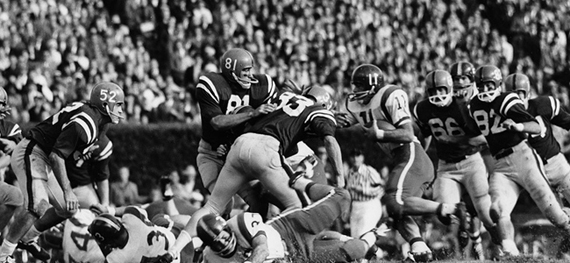
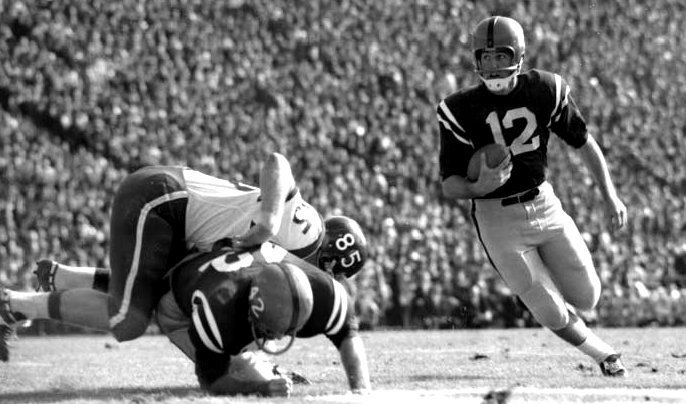
| 1) National Championship Foundation | 4.68 |
| 2) Billingsley (math system) | 4.62 |
| 3) DeVold
(math) | 4.60 |
| 4) Houlgate (math) | 4.53 |
| 5) Poling
(math) |
4.47 |
| 6)
College
Football Researchers Association |
4.43 |
| 7) Sagarin-ELO (math) | 4.37 |
| 8) Litkenhous
(math) |
4.29 |
| 9) Helms Foundation | 4.28 |
| 10) Boand (math) | 4.27 |
| 11) AP Poll | 4.17 |
| 12) Dunkel (math) | 4.13 |
| 13) Sagarin (math) | 4.12 |
| 14) Williamson (math) | 3.76 |
| 15) Berryman (math) | 3.30 |
| 1) Boand (math system) | 4.26 |
| 2) College Football Researchers Association | 4.22 |
| 3) Poling (math) | 4.11 |
| 4) Helms | 4.09 |
| 5) Sagarin-ELO (math) | 4.06 |
| 6) National Championship Foundation | 3.96 |
| 7) Dickinson (math) | 3.49 |
| 8) Houlgate (math) | 3.35 |
| 9) Billingsley (math) | 3.34 |
| 10) Sagarin (math) | 3.28 |
| 11) Parke Davis | 2.77 |
| 1) Houlgate (math system) | 4.5 |
| 2) Helms | 4.3 |
| 3) Parke Davis | 4.2 |
| 4) National Championship Foundation | 3.7 |
| 5) Billingsley (math) | 3.6 |